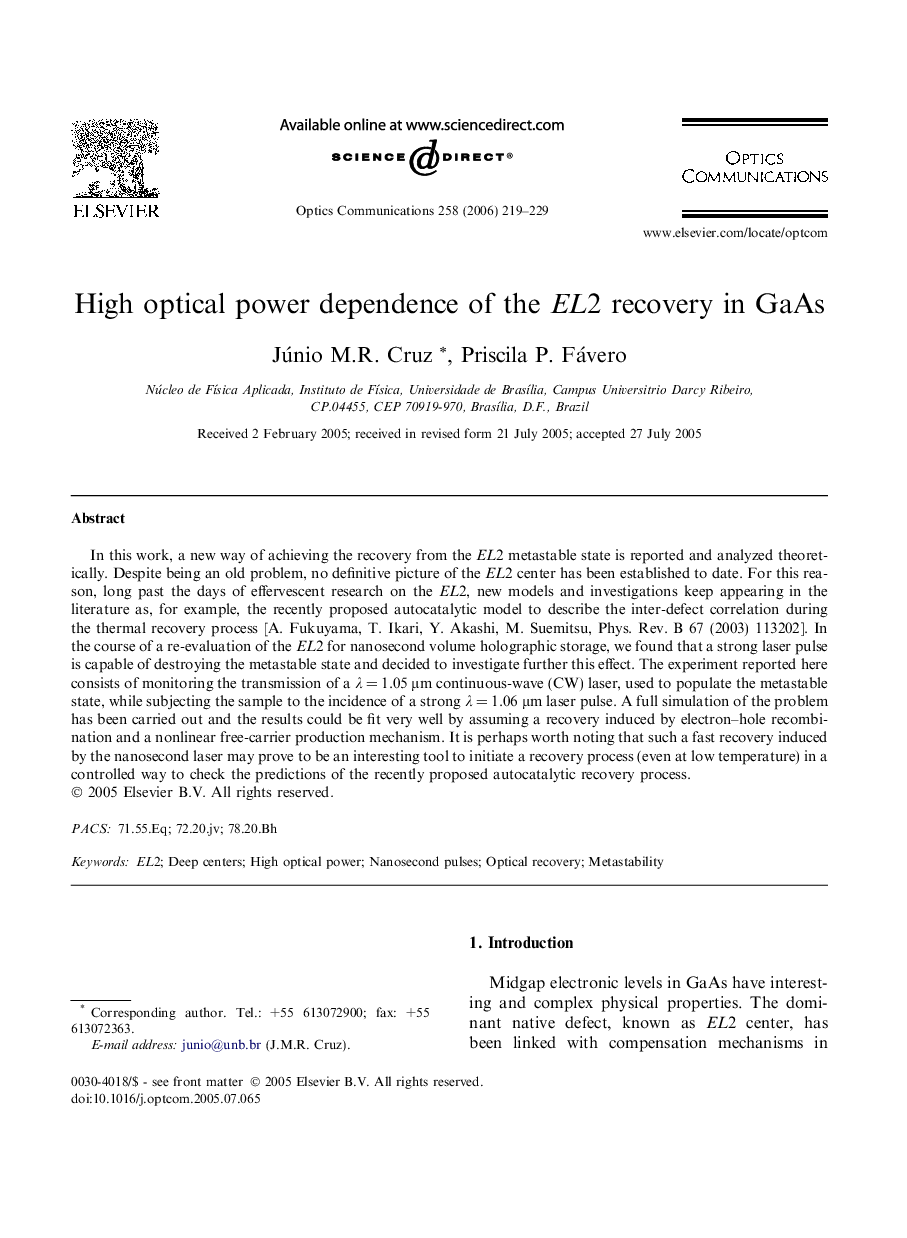| Article ID | Journal | Published Year | Pages | File Type |
|---|---|---|---|---|
| 1542802 | Optics Communications | 2006 | 11 Pages |
Abstract
In this work, a new way of achieving the recovery from the EL2 metastable state is reported and analyzed theoretically. Despite being an old problem, no definitive picture of the EL2 center has been established to date. For this reason, long past the days of effervescent research on the EL2, new models and investigations keep appearing in the literature as, for example, the recently proposed autocatalytic model to describe the inter-defect correlation during the thermal recovery process [A. Fukuyama, T. Ikari, Y. Akashi, M. Suemitsu, Phys. Rev. B 67 (2003) 113202]. In the course of a re-evaluation of the EL2 for nanosecond volume holographic storage, we found that a strong laser pulse is capable of destroying the metastable state and decided to investigate further this effect. The experiment reported here consists of monitoring the transmission of a λ = 1.05 μm continuous-wave (CW) laser, used to populate the metastable state, while subjecting the sample to the incidence of a strong λ = 1.06 μm laser pulse. A full simulation of the problem has been carried out and the results could be fit very well by assuming a recovery induced by electron-hole recombination and a nonlinear free-carrier production mechanism. It is perhaps worth noting that such a fast recovery induced by the nanosecond laser may prove to be an interesting tool to initiate a recovery process (even at low temperature) in a controlled way to check the predictions of the recently proposed autocatalytic recovery process.
Related Topics
Physical Sciences and Engineering
Materials Science
Electronic, Optical and Magnetic Materials
Authors
Júnio M.R. Cruz, Priscila P. Fávero,
